The Broader Impact of Effective Water Management

Water safety is often focused only on Legionella control, but an effective program can provide a much wider range of benefits. Water quality influences not only occupant health but also the performance of infrastructure, long-term sustainability goals, and financial outcomes. When facilities rely on outdated or incomplete water management strategies, they leave themselves vulnerable to risks that go well beyond Legionella. A smarter approach, grounded in a multi-barrier water management strategy, offers a way to protect people, extend equipment life, reduce operational costs, and support sustainability. Why traditional water treatment methods fall short Many facilities continue to lean on conventional practices such as flushing, temperature monitoring, and municipal disinfectant residuals. While these measures are widely used, they rarely address the real drivers of waterborne pathogen risk. Biofilm and sediment shield bacteria from disinfectants, temperature control is ineffective, cold water risks are overlooked, and flushing programs often require significant time and energy without producing lasting results. The cycle of monitoring and corrective actions that results from these methods is not just inefficient; it can mask bigger problems, such as hidden sediment accumulation or corrosion that undermines water quality throughout a building. The overlooked role of sediment Sediment is an underestimated challenge in building water systems. Sediment is naturally present in source water and often introduced through water main breaks, construction activity, or corrosion within pipes. Once inside, it quietly disrupts both water quality and infrastructure: Sediment-induced damage Broader impacts on facilities Poor water management is not just a safety concern; it affects every part of a facility’s operation. This interconnected risk landscape is why leading facilities are rethinking their approach with multi-barrier solutions that go beyond Legionella and compliance. Smarter water management A multi-barrier approach layers proven technologies with expert service to create a comprehensive, defensible water management strategy. Together, these measures protect both people and infrastructure: These technologies are integrated into a program supported by data analytics and remote monitoring, ensuring that facility teams can act proactively instead of reactively. Real-world results The benefits of this approach are measurable. In one academic medical center, implementing a multi-barrier solution allowed hot water heaters to be lowered from 160°F to 125°F while still achieving non-detect Legionella results, cutting energy use by 50%. Another facility reduced sediment loads by nearly 98%, preventing costly pump failures and improving system reliability. Even more importantly, infection risk was significantly reduced. One facility saw complete elimination of Pseudomonas, Acinetobacter, and Stenotrophomonas detections, improving patient safety and reducing the burden of HAIs. Rethink water safety for the future Water is more than a utility; it’s a clinical, operational, and financial risk factor. By addressing underlying issues like sediment and biofilm with smarter, layered protection, facilities can safeguard their people, extend equipment life, and achieve long-term results. If your current water management strategy feels like a cycle of short-term fixes, it may be time to take a smarter approach. Connect with a LiquiTech water safety expert today to explore how a multi-barrier strategy can transform your facility’s water quality and performance.
Multi-Barrier Approach: Setting a New Standard for Water Safety
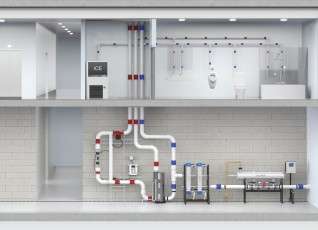
Healthcare facilities today face increasing water safety risks. Aging infrastructure, frequent water main breaks, and elevated sediment levels are straining plumbing systems and creating ideal conditions for waterborne pathogens to thrive. Municipal treatment processes, while essential, often don’t address these downstream challenges once water enters a facility. The result is a growing concern for occupant safety, equipment reliability, and compliance. One healthcare facility confronted these realities head-on after dealing with Legionella positivity in its cold-water system, as well as recurring detection of Pseudomonas, Acinetobacter, and Stenotrophomonas. Beyond microbial risks, high sediment loads from the municipal water supply were causing significant damage to plumbing infrastructure, increasing maintenance costs, and accelerating corrosion. Traditional remediation approaches were unable to deliver sustainable results. The Challenge The facility needed a comprehensive strategy that could both eliminate pathogens and reduce the environmental conditions that allowed them to flourish. The solution: A multi-barrier approach To address these challenges, LiquiTech implemented a multi-barrier water treatment solution designed to deliver layered protection: Together, these technologies worked in synergy to address the root causes of water quality problems and provide sustained protection. The results By addressing microbial challenges, sediment-related damage, and infrastructure reliability together, the facility established a new standard of care for water safety. The solution not only safeguarded patients and staff but also delivered measurable operational and financial benefits. Connect with an expert Fill out the form below to connect with a LiquiTech expert to explore how a multi-barrier water treatment approach can help protect your facility’s water, systems, and ROI.
The Future of Plumbing: Smart Technologies for Better Water Management

The plumbing industry is undergoing a technological transformation. Aging infrastructure, evolving regulations, and increasing health risks necessitate a shift toward smarter, data-driven water management solutions. These innovations can improve water quality, optimize system performance, and enhance occupant safety. This blog explores how smart plumbing technologies are shaping the future of building water systems, offering practical insights for implementation. Challenges facing building plumbing systems Source water quality often declines as it travels through a building’s plumbing system, impacted by factors like sediment, biofilm, temperature fluctuations, and disinfectant loss. Disruptive events—such as water main breaks, construction, or hydrant flushing—can stir up sediment and biofilm, introducing these contaminants into the building. Once inside, the situation can worsen due to aging infrastructure, inconsistent temperatures, and water stagnation. Pressure put on building water systems: Addressing these challenges requires proactive solutions grounded in strong water management principles. Key principles of effective water management A comprehensive water management strategy builds resilience, reduces risks, and ensures regulatory compliance. The core principles include: Risk assessment Control measures Monitoring and documentation Interventions and corrective actions These principles create a foundation for incorporating advanced smart technologies into plumbing systems. The role of smart technologies in building water management Smart technologies bring automation, real-time data, and predictive analytics to water management, making systems safer, more efficient, and easier to manage. Key innovations include: Smart sensors Programmable flushing devices Advanced water treatment technologies The following technologies offer real-time water management, adjusting automatically based on water conditions and ensuring optimal system performance. Benefits of smart plumbing systems The advantages of implementing smart plumbing technologies go beyond regulatory compliance: Get started with smart plumbing technologies Adopting smart technologies requires strategic planning. Here’s how to begin: Embracing the future of plumbing The plumbing industry is evolving, and smart technologies are leading the way. These tools empower facility managers and engineers to proactively address water system challenges, ensuring safer, more efficient, and compliant operations. Now is the time to invest in the future of water management. By adopting smart technologies, you can enhance occupant safety, optimize operations, and create resilient systems. Ready to step into the future? Contact LiquiTech today to explore how our smart technologies can transform your building’s water management.
Report: Gaps in Water Management Programs and Increased Risks
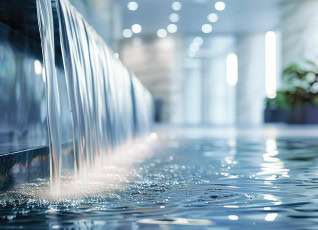
A well-structured and implemented water management program (WMP) is crucial in controlling Legionella and other waterborne pathogens. Recent research has identified common gaps in water system management that may increase the risk of Legionnaires’ disease outbreaks. By understanding these areas and applying proactive solutions, facility teams can strengthen their WMPs and better protect building occupants. Key findings from recent research A comprehensive study published in Microorganisms analyzed over 220 Legionnaires’ disease outbreaks and found that nearly 90% of cases were linked to preventable issues within building water systems (Dooling et al., 2021). This study, along with a recent CDC report, highlights areas where water management programs can be improved to better control Legionella growth (CDC, 2024). The research found that many outbreaks stemmed from a combination of system design flaws, operational lapses, lack of systemic documentation, and insufficient oversight. Specifically, the following challenges were identified: Facilities like healthcare institutions, hotels, senior living communities, and large commercial buildings are particularly at risk due to the complexity of their water systems and the presence of vulnerable populations. By recognizing these common challenges, organizations can take meaningful steps to enhance their water safety efforts. Strengthening water management programs Effective water management programs require consistent oversight to ensure that all activities are carried out as defined in the plan. When any part of a water management plan is not fully implemented, it may leave building occupants vulnerable to potential health risks and expose building owners to legal and reputational consequences in the event of a disease case or outbreak. The CDC and ASHRAE Standard 188 provide guidance on best practices, and applying these recommendations consistently can help mitigate risks. Key strategies for strengthening WMPs include: Strengthen your water management program A well-maintained and properly executed water management program is one of the most effective ways to prevent Legionnaires’ disease outbreaks. By proactively addressing gaps in water safety protocols, facilities can better protect their occupants and maintain compliance with public health standards. Ensuring the safety of building water systems requires ongoing effort and expertise. Schedule a consultation with LiquiTech today to learn how our proven solutions can help your facility strengthen its water management program and reduce Legionella risk. Sources
“Spring is here—and so is Legionella risk,” warns expert

As the weather warms up, many healthcare facilities prepare for seasonal changes in staffing, patient volumes, and operations. But one area that often gets overlooked during this transition is your building water system—and spring can bring a perfect storm of conditions that elevate the risk of Legionella and sediment-related issues. “Spring is here—and so is Legionella risk,” says Dave Pierre, building water safety expert at LiquiTech. “Warmer temperatures, shifting water demand, and municipal activity like hydrant flushing create ideal conditions for both bacterial growth and sediment intrusion in building water systems.” Five spring risk factors impacting water safety Here are five reasons why spring poses increased water safety risks: Warmer weather raises cold water temps With rising outdoor temperatures, cold water lines—especially those in sun-exposed or poorly insulated areas—can warm into the ideal Legionella growth range (77–113°F). Even in well-designed systems, this shift can allow bacteria to multiply in areas not typically considered high-risk. UV disinfection on the incoming water supply can help kill bacteria before it enters your building, while systemic disinfection methods such as copper-silver ionization can prevent bacteria from growing and spreading in warm, low-flow areas within your plumbing. Together, these technologies offer a multi-barrier solution to address both external and internal risks. Seasonal water quality changes increase microbial activity Spring runoff and heavy rains can significantly impact source water quality by increasing turbidity, organic matter, and nutrient load in the municipal supply. These changes can strain municipal treatment processes and often result in lower chlorine residuals and increased microbiological activity in the water entering your facility. This weakens your first line of defense against waterborne pathogens like Legionella. UV disinfection helps reduce microbial load before it enters the building, while systemic disinfection technologies provide ongoing protection throughout your plumbing system. Municipal disruptions introduce sediment Spring is prime time for municipal hydrant flushing and water main repairs. These activities can stir up sediment and contaminants in the public water supply, which then make their way into your building. Sediment doesn’t just reduce disinfectant effectiveness—it can also feed bacterial growth, damage water-bearing equipment, and even lead to pipe leaks or system failures. Sediment filtration on the incoming water supply helps prevent sediment from entering the building, protecting plumbing infrastructure and supporting overall water quality. Changing demand patterns stress plumbing Spring often brings changes in how different parts of a facility use water. Higher demand from increased patient volumes, reopened services, or seasonal water systems (e.g., cooling towers, irrigation systems, and outdoor water features) can cause pressure fluctuations and temperature shifts that disturb biofilm and mobilize bacteria. On the flip side, lower or inconsistent usage in certain areas can lead to stagnation, loss of disinfectant residuals, and unchecked Legionella growth—especially in places like handwashing sinks or infrequently used showers. Smart sensors throughout the plumbing system can help monitor these changes in real time, identifying abnormal flow patterns, temperature inconsistencies, and other early warning signs of system imbalance—so you can take corrective action before issues escalate. Stagnant water in underused areas Units that saw minimal use during the winter—like seasonal wings, outpatient areas, or overflow rooms—may still have stagnant water sitting in the plumbing. Without proper flushing and maintenance, that water can harbor biofilm and Legionella, and turning those outlets back on can send contaminated water into patient areas. Point-of-use filters offer immediate protection at faucets and showers, while flushing protocols guided by your water management program can help clear stagnant water safely. What to do next Spring is the ideal time to review your water management plan and ensure it addresses seasonal risk factors like temperature fluctuations, sediment intrusion, and changing water use patterns. A targeted water system risk assessment can help identify vulnerabilities and confirm that your plan includes the right preventive measures—such as flushing procedures, filtration strategies, monitoring points, and disinfection methods—for this time of year. Making these updates now can help reduce the risk of Legionella growth, protect your patients, and prevent costly equipment damage tied to sediment and system imbalances. Need support evaluating your water management plan this spring? Our team of water safety experts is here to help, contact LiquiTech today.
From Source to Tap: Navigating Building Water Quality
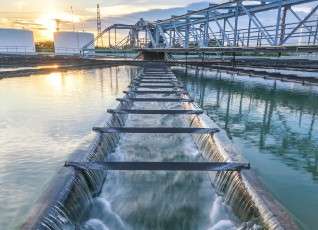
Water traveling from municipal sources to a building’s taps undergoes a complex journey influenced by everything from the quality of the source water to the building’s internal distribution network. Even water that meets national safety standards can encounter challenges as it passes through aging pipes, is affected by shifting climates, and interacts with building infrastructure. Understanding these factors—and taking proactive steps to address them—is essential for ensuring safe, reliable, and sustainable water. Understanding source water quality The foundation of safe drinking water in the U.S. is the Safe Drinking Water Act (SDWA), which mandates the EPA to set health-based standards for public water supplies. While compliance with SDWA ensures water is safe to consume, it doesn’t guarantee that water entering a building’s plumbing system is free of all contaminants or pathogens. Once water leaves the municipal water treatment plant and enters the distribution system, the quality of the water can change drastically before it reaches a building, leaving building water systems susceptible to issues like scale, corrosion, and even microbial growth. Growing challenges influencing source water quality Leveraging water quality reports Consumer Confidence Reports (CCRs) are annual water quality reports issued by municipalities to inform consumers about the safety and quality of their drinking water. By reviewing these reports, engineers and facility managers can anticipate challenges such as scaling, corrosion, or bacterial growth and adjust water treatment protocols accordingly. How source water quality impacts buildings Solutions for optimal water quality To mitigate risks and ensure high-quality water throughout building systems, you must adopt proactive and multi-faceted strategies. Here are some proven solutions: 1. Supplemental disinfection systems: Installing secondary disinfection systems can help control microbial growth beyond the municipal supply. Options like UV disinfection can target pathogens like Legionella without contributing to harmful DBPs or accelerating corrosion. 2. Flushing programs: Regular flushing of plumbing systems removes stagnant water, sediment, and biofilm. A well-designed flushing program includes low-use fixtures, distal outlets, and hot water recirculation loops to prevent microbial growth and ensure disinfectant efficacy. 3. Sediment filtration: Point-of-entry sediment filtration systems capture particulates and sediment before they enter the building’s plumbing, reducing strain on equipment, minimizing scale formation, and improving water clarity. 4. Water softeners: By reducing hardness, softeners prevent scaling and improve the efficiency of water-dependent systems. This is particularly critical in areas with high sediment or hard water. 5. Smart monitoring: Modern IoT-enabled sensors can provide real-time insights into water quality metrics such as temperature, pH, chlorine residuals, and microbial activity. Automated alerts enable facility teams to respond quickly to emerging issues. Standards, best practices, and emerging trends Standards and best practices Several modern guidelines provide a framework for water quality management: Emerging trends Making water quality a strategic priority Water quality is not just a technical challenge—it’s a strategic priority. Poor water quality can compromise building performance, increase operational costs, and endanger occupant health. By leveraging tools like CCRs, adhering to best practices, and investing in advanced water management solutions, you can ensure that your water systems deliver safe, efficient, and sustainable water. Partner with LiquiTech to lead the way in advanced water intelligence. Together, we can transform your building’s water systems. Contact us today to get started.
AAMI ST108: Ensuring Water Quality in Medical Device Processing
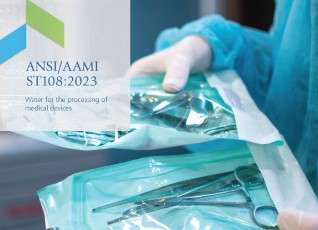
The Association for the Advancement of Medical Instrumentation (AAMI) introduced Standard ST108 in 2023 to replace the previous AAMI TIR34:2014/(R)2021 standard. AAMI ST108 includes guidelines on: Categories of water quality: Defines water quality requirements for each stage of sterile processing. Water quality monitoring: Sets criteria for assessing water quality, including turbidity, pH, microbial levels, conductivity, and other factors. Water treatment: Establishes protocols for maintenance, monitoring, and quality improvement in water treatment systems. AAMI ST108 is considered a best practice for patient safety and is likely to become a requirement of other standards, like The Joint Commission Water Management Standard EC.02.05.02. Categories of water quality AAMI ST108 standardizes water quality for medical device processing to prevent adverse outcomes associated with substandard water. It defines three primary water quality levels—utility, critical, and steam—each tailored to different stages of device sterilization and disinfection. Utility water or tap water is generally minimally processed and used for tasks like flushing and washing. Critical water requires higher purity levels for tasks like high-level disinfection and final rinsing. Steam is used in sterilization and must meet specific standards to ensure safety and efficacy. The standard includes extensive testing protocols to ensure water quality across these categories. Key testing criteria include turbidity, pH, microbial levels, conductivity, and various chemical parameters. Water quality monitoring To comply with ST108, facilities must routinely test utility, steam, and critical water to ensure consistent quality. Water testing should cover microbial and chemical parameters as well as general water quality metrics like turbidity, pH, and total organic carbon. Routine testing frequency is determined based on initial validations and risk assessments, with periodic testing following interruptions, repairs, water advisories, or in response to adverse outcomes (e.g., staining, discoloration, or deposits on medical equipment). Facilities should create sample locations representative of water contact points and monitor this over time to ensure ongoing compliance with ST108 standards. All water quality parameters, monitoring and verification protocols, and control measures should be incorporated into the facility’s existing water management plan. Water treatment In the ST108 sterilization process, water treatment is divided into three main stages: pretreatment, primary treatment, and storage/distribution/final treatment. Each stage is essential in preparing high-purity, sterile water for medical and sterilization equipment. Here’s a breakdown of how these stages are structured. Stage 1: Pretreatment The pretreatment stage prepares water for further purification. This step ensures that downstream equipment operates efficiently by removing larger particles, sediments, chlorine, and hardness, which could cause damage or interfere with subsequent treatments. Sediment filtration: Filters particles and sediment from the utility water that could harbor bacteria or clog and damage equipment. Carbon filtration: Dechlorinates water by removing chlorine and organic compounds. Water softening: Reduces hardness (calcium and magnesium) to prevent scaling and extend equipment life. Stage 2: Primary treatment The primary treatment stage refines water quality to meet strict purity and safety standards, making it suitable for medical sterilization applications. The goal of this stage is to achieve high levels of purity by removing dissolved ions, organic contaminants, and microorganisms. Reverse osmosis (RO): Uses a semipermeable membrane to filter out ions, organic matter, and some microorganisms, creating purified water. Deionization (DI): Uses ion-exchange resins to further purify the water by removing any remaining dissolved salts and ions. Stage 3: Storage, distribution, and final treatment This stage maintains water quality during storage and distribution and ensures the highest purity right before use. The purpose of this stage is to prevent microbial contamination and ensure that water remains sterile at the point of use. UV disinfection: Provides final microbial inactivation by using UV light to disrupt bacterial DNA. Point-of-use filtration: Use of micropore or ultrafine filters at the final outlet to prevent contaminants from entering the sterilization cycle. Incorporating ST108 into your water management program To incorporate ST108 into your water management plan, start by reviewing your current water treatment processes and identifying areas that need alignment with ST108’s requirements. Involve key personnel such as facility managers, infection preventionists, clinical engineering staff, medical device processing personnel, and water safety specialists who understand both operational needs and regulatory standards. These specialists will assess your existing setup, identify gaps, and update treatment protocols to ensure compliance. Collaborate with water treatment experts to implement technologies that meet ST108 criteria at each stage of water handling, from pretreatment to storage and distribution. For example, they may recommend sediment filtration, softening, or UV disinfection systems tailored to your facility’s usage patterns and contaminant profile. Additionally, integrate regular testing and monitoring into your water management plan to ensure ongoing compliance and make adjustments to processes as needed. Partnering with LiquiTech to comply with ST108 LiquiTech simplifies ST108 compliance with targeted solutions that streamline water quality monitoring and control. Water quality testing facilitation Coordination services to streamline ST108 testing compliance. Automatic shipment of sampling bottles and coordination with third-party labs. Water management program integration Support in incorporating ST108 guidelines into your water management plan. LiquiTech™ Sediment Filtration (pretreatment) Removes particulates from utility water to meet ST108 standards, making it suitable for critical applications. Protects reverse osmosis (RO) and deionization (DI) systems by reducing fouling and scaling, which extends equipment lifespan and lowers maintenance costs. Minimizes biofilm formation to reduce microbial risks. Ready to get started? Contact LiquiTech today to see how we can help your facility comply with AAMI ST108.
How Weather, Climate, and Water Sources Impact Waterborne Disease Hospitalizations
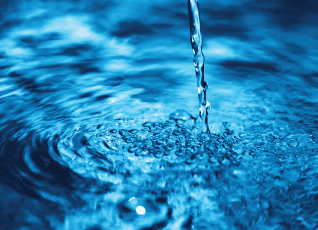
A recent study from Columbia University, published in the open-access journal PLOS Water, investigates how weather conditions, climate, and water sources affect hospital admissions for waterborne infectious diseases in the United States. The study examined 12 years of data from 516 hospitals in 25 states. Key findings on biofilm-forming bacteria Biofilm-forming pathogens, such as Legionella, Pseudomonas, and Nontuberculous mycobacteria (NTM), thrive in biofilms within water distribution systems and are responsible for respiratory infections, especially among vulnerable populations like individuals over 55 or those who are immunocompromised. During the study period, biofilm-forming bacteria were responsible for 81% of all waterborne disease hospitalizations. Geographical and environmental influences Conclusion The study identifies a clear link between meteorological conditions, drinking water sources, and hospitalization rates for waterborne diseases. With climate change potentially leading to more extreme weather events, the study highlights the need for improved water infrastructure and water management practices to mitigate the risk of these waterborne infections, particularly in urban areas and regions dependent on groundwater sources.
Plumbing 201 for Infection Preventionists: The Impact of Plumbing on Healthcare
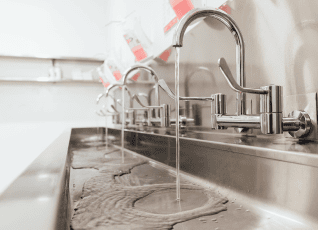
Healthcare facilities are tasked with preventing the spread of healthcare-associated infections (HAIs), and the intricacies of plumbing design and material selection play a significant role in this effort. The role of biofilm in promoting bacteria and pathogens in healthcare water systems including drains and the link between drinking water outbreaks like Legionella to biofilm in plumbing systems, and the importance of selecting the right materials for supply lines are all pivotal in curbing the risk of HAIs. The role of plumbing in infection control Understanding the interaction between plumbing materials and microbial growth is imperative for Infection Preventionists (IPs). Making informed choices during construction and renovation allows for the selection of materials that not only minimize infection risks but also ensure compliance with health and safety standards. By collaborating effectively with facility management, IPs can significantly contribute to joint infection control initiatives, ensuring that plumbing systems do not become a source of infection. Key plumbing terms to understand Infection prevention requires a firm grasp of key plumbing concepts that impact patient safety. Understanding terms such as leaching, corrosion, and biofilms enriches an IP’s toolkit, allowing for better mitigation of risks associated with waterborne infections. Leaching The process by which materials, such as metals or chemicals, dissolve or are washed out from the pipe material into the water due to contact with the water over time. In healthcare settings, leaching can introduce potentially harmful substances into the water supply, affecting water quality and patient safety. Corrosion The gradual destruction or deterioration of materials (metals, alloys, plastics, etc.) caused by chemical reactions with their environment. In pipes, corrosion can lead to reduced water flow, leaks, and the release of metals into the water, which can serve as nutrients for microbial growth, including biofilms. Biofilm A complex aggregation of microorganisms, including bacteria, fungi, and protozoa, that adhere to each other and surfaces, encased in a protective and adhesive matrix. Biofilms in plumbing systems can harbor pathogens, making them resistant to disinfection and posing a significant risk for HAIs. Types of lines: Supply, return, drain, waste Plumbing systems consist of multiple types of lines, each with a distinct function. Here, we explore supply lines, return lines, drain lines, and waste lines. Grasping the role of each type is vital for maintaining an efficient, safe, and reliable plumbing system. Supply lines The integrity of plumbing supply lines is critical in delivering safe, potable water for drinking, handwashing, and patient care activities. Materials like copper, PEX, and CPVC are chosen for their durability and reliability. Flexible water supply pipes offer installation ease and adaptability, making them an excellent choice for connecting water supplies to fixtures in constrained spaces. Their construction from materials like stainless steel, PVC, or braided nylon offers durability and resistance to corrosion, ensuring reliable performance over time. Return lines Equally important are the plumbing return lines, which ensure the efficient operation and delivery of potable water systems. They contribute to patient comfort and infection control by reducing water age and stagnant conditions, preventing sediment accumulation, and ensuring temperature and disinfectant residuals. Drain and waste lines Proper sanitation in healthcare facilities hinges on effectively removing wastewater and materials through well-designed drain and waste lines. Choosing the right materials, such as PVC or cast iron, and ensuring their correct installation and maintenance are key factors in preventing backflows and the spread of pathogens. Types of plumbing material and their impact on patient safety Exploring the benefits and potential risks associated with commonly used plumbing materials—including copper, stainless steel, cast iron, galvanized steel, and various plastics such as PVC, CPVC, and PEX—helps IPs make informed decisions. PVC, CPVC, and PEX are generally not used in healthcare plumbing due to their susceptibility to biofilm formation and potential chemical leaching. These materials can create environments conducive to microbial growth, posing significant infection risks in healthcare settings. Additionally, their lower thermal tolerance and potential for chemical degradation under high-temperature water systems make them less suitable for the stringent plumbing requirements in healthcare facilities. Each material has its advantages, such as antimicrobial properties or corrosion resistance, but also considerations like the need for regular maintenance to prevent contamination. Copper Copper is favored for healthcare plumbing because of its antimicrobial qualities and durability. It lowers microbial levels in water systems and keeps water quality high with a lower risk of contamination, however over time, it can lose these properties due to scale and sediment accumulation. Used in drinkable water lines, both hot and cold, copper helps reduce infections associated with healthcare. Regular checks and maintenance are needed to avoid bacterial contamination from damaged pipes. Despite its initial cost, copper’s health advantages and long-term use can make it a cost-effective choice. Stainless steel Stainless steel is favored in healthcare for its corrosion resistance, hygiene, and durability. Its non-porous surface helps reduce bacterial growth and biofilm, promoting a cleaner water supply and helping prevent HAIs. Despite higher initial costs, its longevity and minimal replacement needs make it a cost-effective choice. Regular maintenance, including inspections and proper cleaning, is crucial for its long-term use. Stainless steel plays a vital role in maintaining patient safety in healthcare settings. Cast iron Cast iron pipes, commonly used for underground plumbing due to their durability and sound-dampening qualities, are mainly used in drainage and vent systems. Over time, these pipes may corrode, risking water contamination and health hazards. Therefore, regular checks and upkeep are crucial. Despite potential risks, when well-maintained, cast iron pipes remain a good choice for healthcare facilities, offering high crush strength and noise reduction, which is important for patient comfort. Prioritizing patient safety in healthcare plumbing material selection is key. Galvanized steel Once popular for their corrosion resistance, galvanized steel pipes can degrade over time. The zinc coating may wear off, leading to rust and bacterial growth. In healthcare settings, these pipes are unsuitable for drinking water systems due to potential water quality issues and health risks. Modern facilities prefer safer materials to reduce risks. Regular maintenance, including corrosion checks, water tests for
Biofilm: What Is It and How to Control It
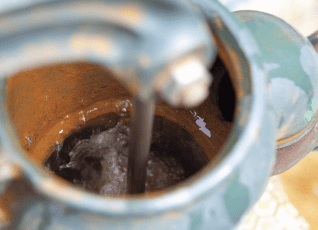
Biofilms, intricate communities of microorganisms including bacteria, fungi, and other microscopic entities, thrive on surfaces through a remarkable process of collaboration and self-protection. Encased within a self-produced, slime-like matrix, these microorganisms firmly anchor themselves to a variety of surfaces, from the moist lining of a water pipe to the hard enamel of our teeth. While often associated with wet environments, biofilms can also adapt to less moist conditions, revealing their resilience and versatility. In this article, we’ll explore what biofilms are, where they’re found, the health concerns associated with them, and how to control them in building water systems. Definition of biofilm Biofilms are composed of different types of microorganisms, including bacterial and fungal species, that grow on and stick to the surface of a structure. A biofilm may cover natural surfaces, like teeth, or manufactured surfaces, like water pipes or water storage systems. The microorganisms that make up biofilm can be in different states, including actively multiplying, dormant, or simply associated with the biofilm structure. They can also exhibit varied phenotypes, including differences in growth rate, gene expression, and resistance mechanisms. Formation of biofilms The microorganisms in biofilms are often embedded in a self-produced matrix of extracellular polymeric substances, which provides structural support and protection. This matrix contains living and dead cells and resists antimicrobial agents like sterilants, disinfectants, and antibiotics, shielding the microbial cells within. Where biofilms are found “Wet” biofilms typically develop in aqueous environments, including natural bodies of water like rivers and oceans, as well as manufactured surfaces like water pipes, storage tanks, and wastewater treatment facilities. “Dry” biofilms are found in less moist environments. They can develop on surfaces in healthcare settings (e.g., operating rooms), on skin or food surfaces, and in indoor environments (e.g., HVAC systems). Health concerns associated with biofilms Biofilms can harbor and protect waterborne pathogens, making them more disinfectant-resistant. They are implicated in a wide range of infections, such as urinary tract infections, middle-ear infections, and implant-associated infections. Biofilms can also exacerbate chronic wounds and lung infections in cystic fibrosis patients. Bacteria in biofilms are often more resistant to antibiotics, complicating the treatment of infections. How biofilms affect plumbing systems In plumbing systems, biofilms can reduce water flow, clog pipes, and corrode plumbing materials. They can also degrade water quality by harboring waterborne pathogens and releasing them into the water supply during events that alter water pressure and flow, like nearby construction or water main breaks. Controlling biofilms in building water systems Regular maintenance, routine flushing, and cleaning of pipes can help control biofilms. Some continuous supplemental disinfectants like copper-silver ionization can penetrate biofilms, killing the microbes contained inside. Physical treatments on the incoming water supply, like UV disinfection and sediment filtration, can help prevent microbes and nutrient-containing sediment from entering the building water system and contributing to new biofilm growth. When designing new building water systems, plumbing engineers should implement designs that reduce stagnation and ensure consistent water flow to help prevent biofilms from forming. Biofilms are a common and potentially harmful occurrence in building water systems. Proper maintenance and control can help prevent health concerns associated with biofilms and keep plumbing systems functioning properly. By understanding what biofilms are, where they’re found, and how to control them, organizations can ensure the safety and quality of their building’s drinking water.